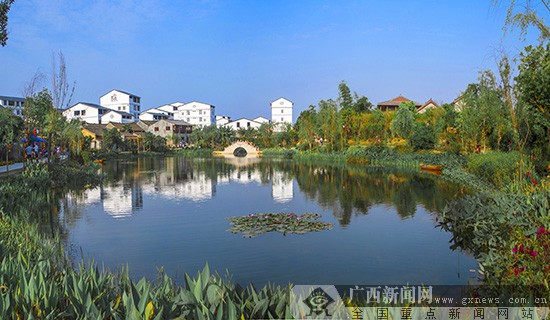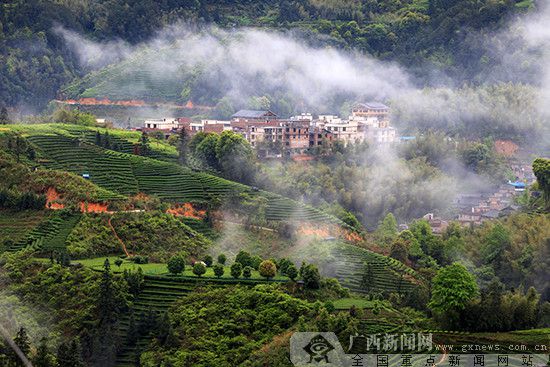Guangxi makes great progress in forestry
By the end of June 2019, Guangxi has planted a total of 2.51 million mu (167,333 hectares) of trees and completed 109 percent of the national mandates, exceeding the national afforestation task of 100 million mu half a year ahead of schedule.

By the end of June 2019, Guangxi has planted a total of 2.51 million mu (167,333 hectares) of trees. [Photo/gxnews.com.cn]
Promote land greening with wide support
In recent years, Guangxi has promoted large-scale national land greening by building a multi-cooperative investment and financing platform for financial capital and social capital.
The Party committee and government of the Guangxi Zhuang autonomous region have implemented a number of major forestry projects. Since 2011, Guangxi has invested a total of 2.6 billion yuan ($378.14 million) in financial resources, planting more than 30 million seedlings and greening 139,600 villages.
Financial institutions have also jointly awarded credits to the national reserve forest base and forestry ecological protection projects totaling 80 billion yuan. The region has newly built and demarcated about 8 million mu of national reserve forests.
Guangxi has also introduced corporate funds to create industries with characteristic economic forests, wood processing, and furniture manufacturing, as well as to encourage the public to invest in the construction of small gardens, small orchards, and small tea gardens to develop the rural tourism. To date, a total of 3,181 villages in Guangxi have built a leisure community with 14,873 micro-orchards, micro-vegetable gardens, and small gardens.
In addition, the forestry department of Guangxi has carried out various forms of tree planting activities. To date, the region has accumulatively planted 450 million trees.

A total of 3,181 villages in Guangxi have built a leisure community with 14,873 micro-orchards, micro-vegetable gardens, and small gardens. [Photo/gxnews.com.cn]
Improve forest ecology with strict policies
In 2019, there were 258,200 mu of hills were closed for afforestation and 683,400 mu of traces were regenerated artificially in Guangxi.
At present, Guangxi has completely banned natural forests. Arid-stony mountain areas and public welfare forest areas are closed to forestry. Commercial activities such as logging, land reclamation, quarrying, soil harvesting, firewood cutting, and grazing are prohibited.
Forestry department have also strengthened artificial planting in places with seriously degraded ecosystems that are lacking germplasm resources to accelerate the vegetation restoration process, as well as to improve the ecological function of forests.
Thanks to a series of restoration measures, the area of rocky desertification land in Guangxi has decreased by 387,200 hectares compared with that in 2011. With a reduction rate of 20.2 percent, Guangxi ranks first in the eight rocky desertification provinces and autonomous regions.
Develop the economy through forestry industry

Forests in Guangxi have garnered great economic value. [Photo/gxnews.com.cn]
As of the end of June 2019, Guangxi had completed a total of 153.67 million mu of conversion of farmland to forests, involving 1.02 million rural households and 5.1 million farmers.
The forestry department of Guangxi has been promoting tree species with ecological-economic value for a long time, expanding the planting scale and forming ecological-economic forestry industries with regional advantages, such as the fast-growing forest industry, dominated by eucalyptus, pine, bean, bamboo, anise, chestnut, and walnut.
At the same time, Guangxi has also developed forestry industries such as forest paper, forest pulp, and forest chemicals, as well as animal husbandry, Chinese herbal medicine, and the weaving industry to promote local economic development.
Since the implementation of policies converting farmland to forests 20 years ago, the total household income of farmers in Guangxi has increased 9.5 percent and the net income has increased by 16.7 percent annually. A total of 5 million mu of economic forests and 8 million mu of fast-growing forests have been planted. The total economic output value of the forests industry has reached 87.8 billion yuan.
By the end of June 2019, the forest coverage rate of Guangxi had reached 62.37 percent.
In the future, forestry departments in Guangxi will promote the oil tea industry and cultivate emerging forestry industries to make full use of its ecological advantages to promote economic development.


